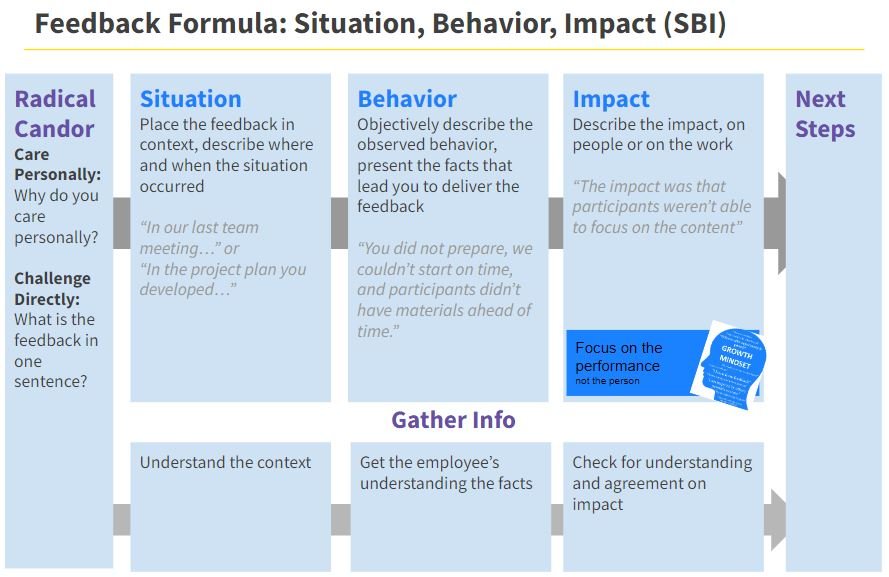Giving Positive Feedback
It’s one thing to give a compliment. It’s something totally different to give positive feedback. We don’t talk about giving positive feedback enough.
What is positive feedback? Positive feedback is specific praise, aimed at helping the feedback receiver repeat their strong performance.
How to give positive feedback? I like the Situation, Behavior, Impact (SBI) formula because it helps build a conversation and often leads to helpful insights.
Feedback Formula: Situation, Behavior, Impact
Situation, Behavior, Impact formula
If you want to practice giving feedback - positive is a great place to start because you can use the same structure and techniques.
Let’s play out the SBI model - here's a simple, sample script:
Situation: "I’d like to talk about the email you sent to the leadership team yesterday - it was great! Are you ready for some feedback?"
Behavior: "I saw you do a couple of things especially well… let me tell you what I saw, and then I’d like to hear from you.
You shared a draft with the team and gave them 24 hours to give you feedback
Your language was clear - yet, you were concise! You used a table to help you put a lot of information in front of stakeholders
Those are the things I noted - what else did you do?"
Impact: "The impact of your work is that you had a crystal clear ask, so the leadership team responded immediately! Well done! Is there an impact I missed?"
Pro Tips for positive feedback:
Use the word “feedback”: using the word “feedback” stamps that you are invested in birth positive and adjusting feedback equally
Have a conversation: It’s fine to give written positive feedback, of course, but if the receiver is still working to lock in their skills, it's helpful to unpack what, exactly, they did and why it worked. For example, let’s say that your direct report sent a great email - if they sent the email because they had an “intuition” about the stakeholder, it’s a perfect time to pull up a stakeholder map and show how their intuition matches the tools the team uses.
Reference skills in your performance rubric: if your company has a performance rubric (like this one), use the exact skill names. That was feedback conversations make direct reports progress explicit. (Also, this makes annual review conversations easy!)
Offer a challenge: For motivated direct reports, lay out what’s next. For example, “now that we’re confident in your ability to draft the email, next time, let’s work on the stakeholder map together, so that you get experience putting together communication strategy.”
Now it’s time to draft a SBI feedback script! Need help? Use my template.

